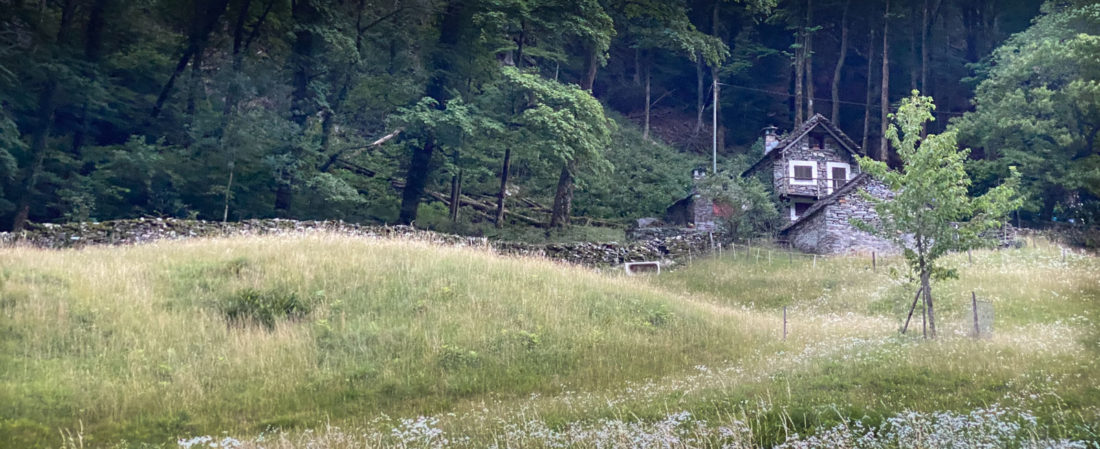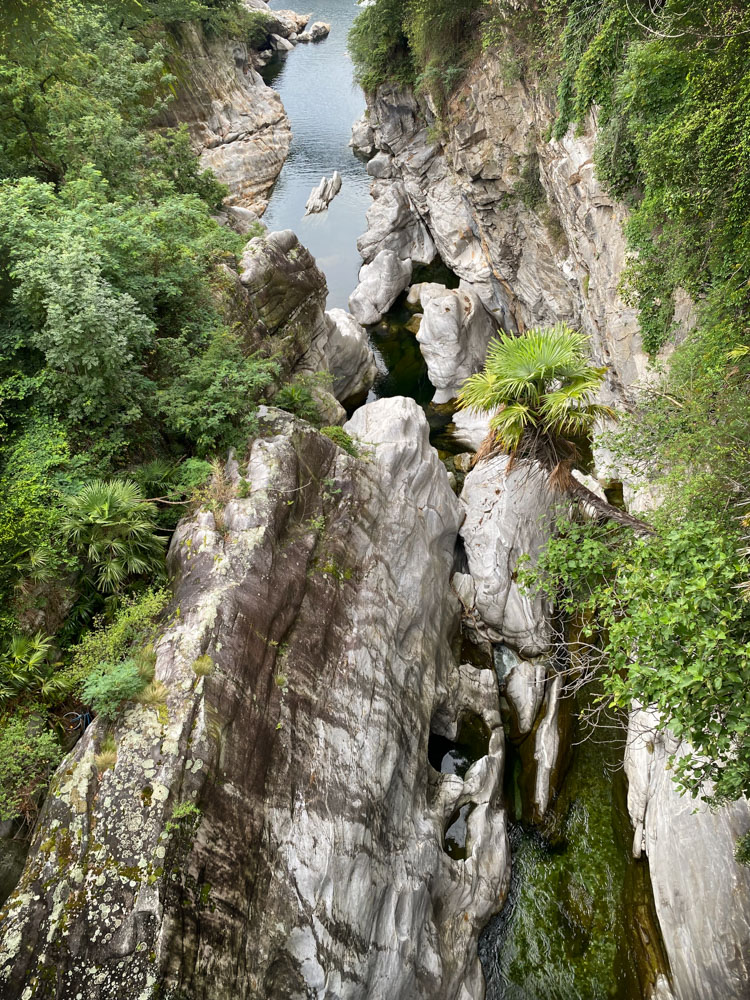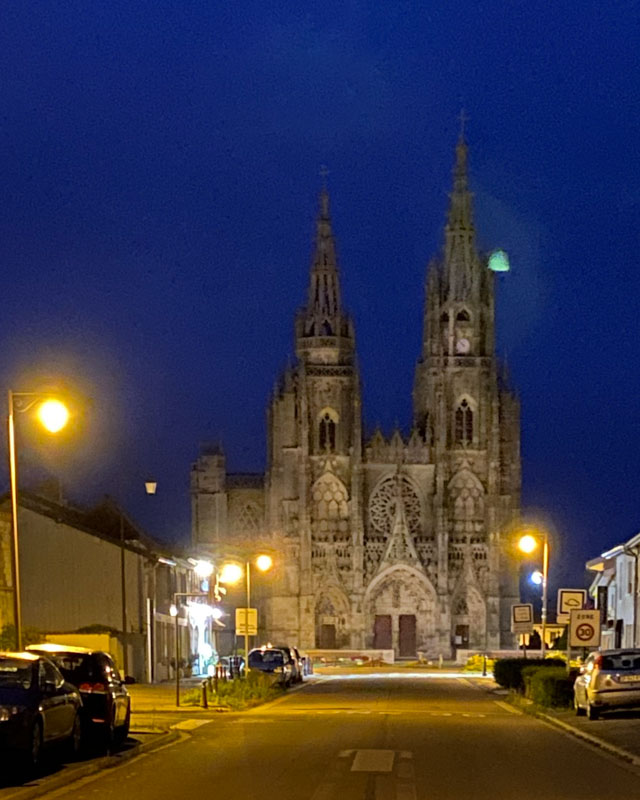
Road trip in Europe
One graduating kid, one car, one dog, four countries, four languages, three seemingly endless tunnels, eleven different places to stay, three positive Covid tests, one quarantine—all in twenty-four days. What it is like to do a road trip in Europe. We were, as the Italians would say, in giro.
Or, the things my dog makes me do. We’ve done road trips in Europe before, instead of taking other modes of transportation, largely so that we could take Lola with us on vacation. Destinations have included Switzerland, Croatia, Corsica, Germany, and France, but this was our most ambitious road trip yet. Sebastian’s high school graduation outside of London in West Sussex, and a twice postponed Loire-valley chateau and canal boat rental in Burgundy with family from California, bookended the trip with plenty of time to explore in between.
The freedom to easily access different worlds is one of the things I like best about living in Italy. In California we’d go for long road trips but still end up, it felt like, not that far from where we started. To start adventuring as soon as possible I try to get further than northern Italy on the first leg, although it is a good five to six hour slog. On our first night out we pushed across the Swiss border to an area near Lake Maggiore called Ticino.
I’ve explored a lot of Switzerland but never this region. It has been strategically important for millenium as it’s the entry to the Gotthard pass, one of the routes over the Alps and into the main Swiss plain. The pass is grueling so Ticino is distinct from the rest of Switzerland. The language and food are Italian and it feels almost tropical, lush, and verdant. But the prices are unmistakably Swiss. Swiss prices have the same effect on the respiratory system as a plunge into the Baltic in winter. I reflexively check the exchange rate—surely 50 CHF for a pasta with tomato sauce and a 12 CHF bottle of water is more reasonable when converted to euros or dollars—nope. Nearly one to one for my currencies. Sometimes a 50 CHF plate of noodles with tomatoes is a $50 plate of noodles with tomatoes.
We stayed in a tiny town called Tegna which next to the Ponte Brolla gorge on the Maggia river, one of the rivers where water rushes down from the Alps to feed the Po River. From an elevated bridge the gorge looks like it has a pretty normal stream at the bottom until I realized that it was all supersized. When we walked down near the river what looked like small river rocks turned out to be immense boulders. It looked like giants had been playing games with rocks and had gotten called home for lunch mid rock skipping.

We left the relaxed, Italian-speaking region behind and headed through one of miracles of modern road building, the Gotthard tunnel. The first tunnel under the Gotthard was for trains and opened in 1882. Cars had to wait their turn until 1980 when the 11-mile long tunnel opened, the longest tunnel in the world at that time (it’s now the fifth longest). It turns out that eleven miles in a tunnel is a long time, not as bad as twenty-two minutes of a hypothetical Thanksgiving dinner between when an uncle declares his support for Qanon and when you can escape after dessert, but definitely longer than twenty-two minutes of most anything else. The first time that we drove through I didn’t know anything about the tunnel and remarked to the family after about five minutes in the dark that this was a really long tunnel. We were at about mile three at that point. It’s one lane in each direction and there can be quite a wait to get in, but we were lucky this time. I’ve done it now five times and each time I’ve been impressed by how respectful drivers are of this stretch of road. The speed limit is 30 miles per hour and drivers mostly obey, as well as leaving an abundant distance between cars.
And then you see light, and you are out, and in a different world. Soaring peaks with snow, and German road signs and food. We stopped for lunch with a friend who lives overlooking Lake Zurich and then decided to drive five hours into France to position ourselves well to make our all-important ticketed time on the Eurotunnel train with the car.
Google routed us along some stretches of the autoroute, but largely along country roads that followed through small towns and countryside, and around countless roundabouts. John recently read David Gilmour’s The Pursuit of Italy where Gilmour posits that the differences in Italy and France’s culture, history, and wealth may be partially due to geography. Italy has a mountain chain that runs its length north to south cutting off one part from another and has almost no navigable rivers. France, on the other hand, has mountains on its borders with most of the country being a fertile plain, and has many wide, deep, navigable rivers. This was dramatically apparent as we drove from Zurich into the Champagne region passing lush, fertile fields of crops and flowing water, so different from our Italian landscape.
We arrived for the night in a tiny village called L’Épine, the hotel chosen mainly as it was touted as very dog-friendly. When I mean a tiny village I know of what I speak. It makes our village look like a metropolis. But it does have the huge hulking Flamboyant-Gothic Basilica di Notre-Dame (yes, Flamboyant Gothic is a thing) in the middle of its three streets, one shop, and one restaurant. We walked around it after dinner when it was dark and misty and the three people who might have been out on the street during the day had left and it was like aliens had planted this thing in here. How could this place have ever created this?

The next day ended in Calais. Calais is the closest French town to England—the channel is a mere 21-miles wide here, so it has been a strategically-important port town pretty much forever. This geographic fate has hit it hard, most recently in WWII, where much of the town was bombed flat. We stayed in a sweet family-run Victorian B&B about a mile from the sea, and as we walked towards the shore the buildings abruptly changed to post-war architecture in every direction. The town was in the throes of Tour de France anticipation, with banners and signs everywhere, as the Tour was due to end Stage 4 in about a week.
The next morning was something I’d fretted about since we started planning the trip—Calais to Folkestone on the Eurotunnel. We arrived 90 minutes early for our ticketed time and pulled right up to the drive-through area of the Pet Welcome Center. A woman walked up and said “Nancy Raff? Is this Lola?” I was amazed—turns out our license plate was scanned on the approach and the records pulled up in advance. She checked Lola’s EU pet passport and I got to scan my dog, a first for me and Lola. All was cleared and we went to the automatic check in. I put in the reservation number and the screen said we were early for our train and would we like to change to the one 30 minutes earlier? Why, yes! We drove on to a parking lot with multiple lanes, like the staging area for a ferry. After about five minutes they started loading us. We drove down to the train and on to one of two levels. We got the top. You drive forward the length of the train until it is filled. Attendants urge you forward and make sure to leave enough room to close doors sealing off one train car from another. Five minutes later we were off. You can get out of your car but as there’s nowhere to go everybody just stays seated.

I am only a tiny bit claustrophobic, but these tunnels did cause me a few moments of careful thought. I am not sure which I found more intimidating, to be deep under a mountain in the Alps or under all the water of the English Channel. Thirty minutes in the dark to ponder various ways of dying, then we arrive in Folkestone and drive off the train. Easy. And yet a whole other world in a matter of minutes.
Next week, Part 2. The son graduates and the Plague hits.
Resources:
Ticino area, Switzerland: our inn, Boato Bistrot & Bed, was clean and simple but I wouldn’t really recommend it. One of those places where the photos on the site were so much better that you wonder if you’ve arrived at the right place. We passed a restaurant on our walk, Da Enzo, that looked very much worth a visit—and it is right on the edge of the gorge. I’m actively looking for recommendations for this area from readers who use this route often.
L’Épine, France: Aux Armes de Champagne, comfortable stop right next to the basilica, although modern in its restoration. Good restaurant too with an impressive chariot of cheeses. Very dog friendly and seems to be a popular stop with the British vacation diaspora. Convenient for exploring the Champagne region.

Calais, France: We looked hard to find something with some charm in very post-war Calais and found it at the quirky and simple Les Secrets des Loges, a bed and breakfast in old Victorian house overlooking the theater. The best part was the lovely family who ran it along with their four cats. One downside was very thin walls.






No Comments